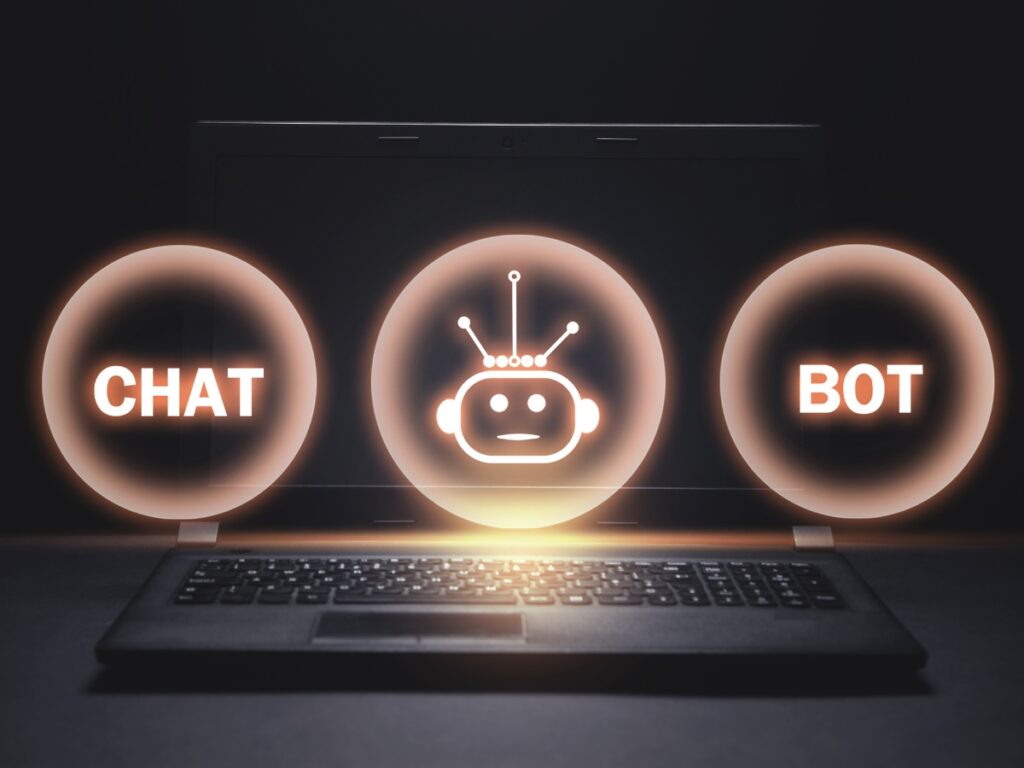This guide offers a deep dive into chatbot UX (User Experience), highlighting its pivotal role in shaping the success of digital interactions. We’ll discuss its significance, best practices, and how a well-designed chatbot UX can increase user satisfaction, engagement, and loyalty in an ever-evolving digital landscape.
Quick Snapshot – For the UX Enthusiast:
- Chatbot UX is at the forefront of determining how users perceive and interact with automated conversational interfaces. It encompasses everything from chatbot design, response accuracy, and interaction flow to the more nuanced aspects like tone, personality, and contextual relevance. A well-thought-out chatbot UX ensures that users get the answers they seek and enjoy a smooth, human-like interaction, minimizing frustrations and maximizing user retention.
- In today’s competitive digital environment, simply having a chatbot is insufficient. A superior chatbot UX can differentiate between a fleeting interaction and a lasting relationship. By placing user experience at the core of chatbot design and development, businesses can ensure they deliver consistent, delightful, and impactful interactions, positioning themselves as leaders in customer-centric digital innovation.
Welcome to the sixteenth Blue Lane Group article in the Best Chatbots for Customer Service: Blueprint for Success in 2023 series. These posts examine the essential chatbot topics of customer service automation, exploring how chatbots revolutionize interactions, enhance user satisfaction, and redefine the benchmarks for excellence in modern customer-centric businesses.

Disclosure: The digital products mentioned in this article are highly regarded in the marketplace and are endorsed by the Blue Lane Group staff. We may earn a commission at no additional cost if you purchase through the provided links.
Table of Contents

Introduction: The Importance of Chatbot UX
In the evolving digital communication landscape, user experience with chatbots is becoming increasingly crucial. As businesses strive to deliver seamless interactions and enhance user engagement, the importance of chatbot UX cannot be overstated.
With the rise in the adoption of chatbots across sectors, ensuring these virtual assistants offer a smooth, intuitive experience is imperative. Gone are the days when chatbots were just an experimental addition; today, they are integral to many digital strategies, with their user experience playing a significant role in their success.
Understanding the Essence of Chatbot UX
Chatbot UX extends beyond just having a chatbot respond to queries. It encompasses a user’s journey, from the initial interaction to the conversation’s conclusion.
An excellent chatbot experience is measured by how effortlessly users can achieve their goals, whether getting information, purchasing, or seeking support. With platforms like Adobe XD and Botsociety, businesses can visualize and refine conversational flows, ensuring the user’s journey is as smooth as possible.
The uniqueness of chatbots in the digital landscape
Chatbots have carved out a unique niche in the digital realm. Chatbots offer dynamic, real-time interactions unlike traditional web pages or mobile apps. Their conversational nature makes them stand out, offering personalized engagements tailored to individual user needs.
With tools like MobileMonkey and Landbot, chatbots can be optimized further to enhance the user experience, adding to their uniqueness. As more consumers seek real-time, personalized responses, chatbots have become the go-to solution for many businesses.
Why UX is paramount in the world of chatbots
In the digital age, users have countless options at their fingertips. If an experience isn’t up to par, they can quickly move on to another platform or service. This makes chatbot UX especially vital. A well-designed chatbot can significantly enhance user engagement, increase conversion rates, and foster brand loyalty.
Using platforms like InVision and Sketch, businesses can prototype and test chatbot interactions, ensuring that users get a seamless experience. Ensuring your chatbot provides an impeccable user experience in a world where every interaction counts is non-negotiable.

Defining Chatbot UX: From Conversational Design to User Interaction
When we talk about chatbot UX, we’re delving into the entirety of a user’s experience when interacting with a chatbot. It’s more than just having a conversation; it’s about the flow, the understanding, and the ease with which a user can achieve their goals.
The design tools, like Adobe XD and Botsociety, aid in crafting these intricate conversational designs, ensuring each interaction feels natural and intuitive. Moreover, with platforms like UXCam for Chatbots, businesses can monitor and refine chatbot engagements, ensuring continuous improvement in user interactions.
Distinguishing between UI and UX in the chatbot context
Both UI (User Interface) and UX (User Experience) hold significance in chatbots but serve different purposes. While UI focuses on the visual elements, such as the chatbot’s layout, design, and overall look, UX is concerned with the user’s journey.
It examines how users feel, the ease of interaction, and the overall satisfaction derived from the experience. Platforms like Sketch and InVision allow businesses to craft compelling bot interfaces, ensuring that the UI complements the UX, leading to a harmonious chatbot experience.
A chatbot’s role in conversational commerce
Conversational commerce is revolutionizing how businesses interact with customers, and chatbots are at the forefront of this shift. Customers can purchase, seek product recommendations, and get support through chatbots – all within a conversational interface.
Tools like MobileMonkey and Landbot optimize chatbots for this very purpose, ensuring users have a seamless shopping experience. In the world of e-commerce, where immediacy and personalization are paramount, chatbots play a pivotal role in bridging the gap between businesses and their customers.

Eight Vital Principles for Enhancing Chatbot UX
In the digital realm, the success of a chatbot is not just determined by its functionality but by the user experience it offers. As chatbots become integral to online interactions, understanding the fundamental principles that drive superior chatbot UX becomes paramount.
These principles are the foundation for creating chatbots that respond effectively and resonate with users, forging a connection and encouraging continued interaction. In the following sections, we’ll delve deep into these eight vital principles, each essential in crafting a chatbot experience that truly stands out and leaves a lasting impact on users.
1. Know Your Platform: Design with Adobe XD, Sketch
Every platform has its nuances, and chatbot design is no exception. When crafting your chatbot’s visual and interactive elements, it’s vital to use tools tailored to the job. Adobe XD is renowned for its capability to design chatbot interfaces that ensure an optimal visual and interaction experience.
On the other hand, Sketch has emerged as a preferred tool among chatbot developers for crafting compelling bot interfaces. Knowing your platform and leveraging the right tools can distinguish between a generic chatbot and one that stands out.
2. Bot’s Objective: Using Landbot, MobileMonkey
Clearly defining your chatbot’s purpose is the cornerstone of its design and functionality. Why is the bot there? Is it to assist, sell, or entertain?
Tools like Landbot emphasize user experience and design, helping developers build chatbots with clear objectives. MobileMonkey, while being more than just a bot builder, offers features to fine-tune a chatbot’s UX through A/B testing and more, ensuring the bot’s purpose aligns seamlessly with its user interactions.

3. Set a Conversational Tone: Botsociety, Botmock
The essence of chatbot UX lies in its conversational tone. It’s not just about what the chatbot says but how it says it. Botsociety offers designers a tailored UX design tool for visualizing and testing conversational flows, ensuring the bot communicates effectively.
Similarly, Botmock provides a comprehensive platform for creating, prototyping, and testing chatbot conversations, ensuring the tone aligns with the brand and resonates with users.
4. Effective User Flows: Using InVision, Typeform
Creating a chatbot that users enjoy interacting with requires a focus on user flows. How does one interaction lead to the next? InVision allows designers to prototype and test these chatbot interactions, smoothing out any potential bumps in the user journey.
Typeform, known for its conversational forms, integrates seamlessly with chatbots, enhancing the user experience by making interactions feel more organic and less like scripted responses. Effective user flows mean a smoother, more enjoyable chatbot UX.

5. Design for Errors: Using Chatbase, UserTesting
In the world of chatbots, errors are inevitable. But it’s not the error that defines the user experience; it’s how the chatbot handles it. Effective error design ensures that users aren’t left frustrated or confused. Chatbase offers analytics tailored for chatbot UX, pinpointing areas of improvement and potential missteps.
In real-world scenarios, UserTesting is invaluable, allowing actual users to interact with the chatbot and provide feedback, including how errors impact their experience. Chatbot developers can enhance user trust and satisfaction by anticipating and designing for mistakes.
6. Embrace the Bot’s Identity: Highlighting uniqueness
A chatbot isn’t just a tool; it’s a digital entity with its persona. Embracing and highlighting this uniqueness can significantly enhance the user experience.
Whether it’s a quirky personality, a distinct tone of voice, or memorable catchphrases, giving your bot a distinct identity makes interactions more engaging and unique. This principle is about more than just function—creating a chatbot personality that users want to return to.

7. Analyze and Optimize: Using Lookback.io, Mixpanel
The development of a chatbot doesn’t end once it’s launched. Constant analysis and optimization are crucial to ensuring its effectiveness. Lookback.io offers both live and recorded sessions of user interactions, providing insights into UX strengths and areas for improvement.
Mixpanel for Chatbots goes further by delivering detailed analytics on user engagements. This continuous feedback loop enables developers to refine chatbot UX, ensuring it evolves with user needs and preferences.
8. Engaging Design: Using UXCam, Hotjar for Chatbots
While the conversational aspect of chatbots is vital, the visual and interactive design elements also play a critical role in user engagement. UXCam for Chatbots focuses on capturing and analyzing user interactions, providing insights to enhance engagement.
Additionally, Hotjar for Chatbots offers heatmap visualization, pinpointing areas where users interact most with the chatbot highlighting potential bottlenecks or particularly engaging elements. Developers can create chatbots that attract users by emphasizing an attractive design.

Why Chatbot UX Matters in Different Domains
Chatbot UX isn’t confined to a single industry or function. Its impact spans various domains, each with its unique set of user expectations and engagement metrics. As the digital landscape becomes more saturated, the importance of chatbot UX in differentiating and delivering value becomes even more pronounced.
Whether streamlining a purchase, creating memorable marketing touchpoints, or ensuring swift customer support, the user experience is the linchpin holding these interactions together.
Chatbots in Sales: Enhancing the buying experience
Chatbots are emerging as invaluable assistants in the bustling world of e-commerce and retail. Businesses can easily guide customers through the buying journey by integrating a smooth chatbot UX into sales. Chatbots can answer product queries, provide recommendations, and even facilitate transactions.
The immediacy and personalized touch they bring can transform the shopping experience from a mundane task into an engaging interaction, ultimately driving sales and building customer loyalty.

Chatbots in Marketing: Engaging users effectively
The marketing arena is all about capturing attention and forging connections. Here, chatbot UX plays a pivotal role. A well-designed chatbot can engage users, provide tailored content, and gather valuable feedback.
They can be integrated into marketing campaigns, serving as interactive touchpoints that engage potential customers. Chatbots can nurture leads, drive conversions, and solidify brand loyalty by delivering real-time, relevant information.
Chatbots in Customer Service: Making support seamless
Chatbots equipped with stellar UX are becoming indispensable in an age where customers expect swift and efficient support. They serve as the first point of contact, addressing common queries, guiding users, and escalating complex issues to human agents when necessary.
Their 24/7 availability ensures that customers aren’t left waiting, and their ability to provide instant solutions enhances overall satisfaction. In essence, by optimizing chatbot UX in customer service, businesses can ensure that support is not just a reactive function but a proactive tool for building trust and loyalty.

FAQ: Common Queries About Chatbot UX
In the dynamic world of chatbot design and development, numerous questions arise. Whether you’re new to chatbots or seeking to refine your existing knowledge, it’s essential to understand some of the most frequently asked questions about chatbot UX.
The distinction between Siri, Alexa, and traditional chatbots
Siri and Alexa are voice-activated virtual assistants developed by Apple and Amazon. They function across various devices, responding to voice commands and assisting users with tasks like setting reminders, playing music, or answering queries. Their primary mode of interaction is auditory, although they can display visual content on specific devices.
On the other hand, traditional chatbots are typically text-based and are found on websites, apps, or messaging platforms. They interact with users primarily through text, guiding them, answering questions, or performing specific tasks based on pre-defined algorithms or AI capabilities. The primary distinction lies in their mode of interaction (voice vs. text) and their broader functionalities and integrations within ecosystems.

The significance of UI in chatbot design
While UX focuses on the overall experience and journey of the user, UI (User Interface) zeroes in on the aesthetics and visual elements of the chatbot. This includes the chat window’s design, button placements, color schemes, and typography.
A well-designed UI ensures the chatbot is visually appealing and easy to navigate, directly influencing user engagement and satisfaction. It’s a vital component in ensuring that the chatbot not only functions effectively but also resonates with the user on a visual level.
Understanding conversational user interfaces
Conversational User Interfaces (CUIs) represent a shift from traditional graphical user interfaces, instead of relying on visual elements like buttons and menus, CUIs bank on natural language interactions through text or voice.
This means users can interact with the system using everyday language, making the experience more intuitive and human-like. Chatbots are prime examples of CUIs, where the primary mode of interaction is conversation. CUIs aim to make technology more accessible and user-friendly, bridging the gap between human communication and digital interactions.

Conclusion: The Future of Chatbot UX and Its Impact on Engagement
Chatbot UX bridges the divide between technological prowess and human-centric interactions in today’s digital age. As organizations increasingly lean into automation, the role of chatbots expands beyond mere functionality to play an integral part in enhancing user experience.
The emphasis on UX signifies an understanding that successful digital interactions are not just about executing tasks but fostering meaningful engagements.
In the foreseeable future, the essence of chatbot UX will evolve further, adapting to the ever-changing user expectations and technological advancements. This continual refinement will focus on responding to user commands and understanding and anticipating their needs, making interactions more intuitive, personalized, and satisfying.
As a result, businesses that prioritize and invest in chatbot UX are likely to see higher engagement rates, fostered loyalty, and an overall elevated user experience, cementing chatbots as indispensable tools in the digital realm.

You Might Also Like
If you enjoyed this article and received value from it, check out the other Blue Lane Group articles in the Best Chatbots for Customer Service: Blueprint for Success in 2023 series:
- Chatbot ROI: Unlock Unmatched Profits with Top 5 Strategies for Optimization
- Omnichannel Chatbots: Unlock Consistent Engagement with 7 Best Practices
- Chatbot KPIs: 10 Essential Metrics to Drive Optimal Results
- Multilingual Chatbots: Break Language Barriers with 8 Leading Solutions
- Enterprise AI Chatbot Solutions: 7 Key Tools to Supercharge Your Business
- Mastering Chatbot Training: 7 Strategies for Optimal User Engagement
- Chatbot APIs: 6 Leading Options for Seamless Functionality
- Chatbot Scripts: 9 Proven Strategies to Boost Conversions and Engagement
- Rule-Based Chatbots: Drive Consistent Responses with Top 9 Benefits
- Chatbot Success Metrics: Unlock Optimal Performance with Top 10 Insights
- Chatbot Analytics: Drive Excellence with 10 Essential Tools
- Mastering Interactivity: Top 10 Chatbot Frameworks Explored
- Chatbots in Retail: 7 Winning Strategies for Elevated Customer Engagement
- Chatbots for Lead Generation: 6 Best Practices to Transform Your Funnel
- Chatbot Integrations: 6 Essentials for Enhanced Productivity and Operations
- Chatbot UX: Enhance Engagement with These 8 Vital Principles
- Chatbot Security: 7 Essentials to Safeguard Your Business
- Chatbot Development Services: 7 Must-Knows to Boost Your ROI
- Chatbots in Healthcare: 6 Leading Innovations Revolutionizing Patient Care
- NLP for Chatbots: Top 6 Techniques Transforming Chat Experiences
- Benefits of Chatbots in Customer Service: 7 Key Sales Boosters
- 7 Essential Social Media Chatbots for Unmatched Engagement
- Building Chatbots Powered by AI: 5 Proven Techniques for Epic Profits





